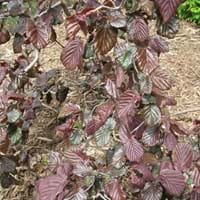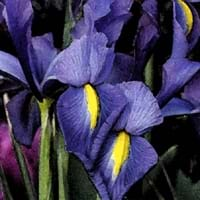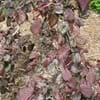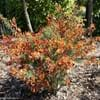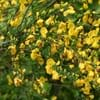Life Span
Annual
Perennial
Type
Shrub
Herbaceous Perennial
Origin
Europe, Northern Africa, Western Asia
Hybrid origin
Types
Shrub
Not Available
Habitat
Woods
meadows, Riverbanks, Rocky Mountains
USDA Hardiness Zone
4-8
5-9
Sunset Zone
2a, 2b, 3a, 3b, 4, 5, 6, 7, 8, 9, 14, 15, 16, 17, 18, 19, 20
2b, 3a, 3b, 4, 5, 6, 7, 8, 9, 10, 11, 12, 13, 14, 15, 16, 17, 18, 19, 20, 21, 22, 23, 24
Habit
Thicket/Colonizing
Clump-Forming
Flower Color
Yellow
White, Yellow, Blue, Purple, Orange, Pink, Rose, Coral, Peach, Burgundy, Lavender, Plum, Orange Red, Dark Salmon, Bronze, Chocolate, Black
Flower Color Modifier
Not Available
Bicolor
Fruit Color
Brown
Not Available
Leaf Color in Spring
Green
Green, Light Green, Gray Green
Leaf Color in Summer
Green, Dark Green
Yellow green
Leaf Color in Fall
Yellow, Green
Not Available
Leaf Color in Winter
Not Available
Light Green
Leaf Shape
Lobed
Sword-like
Plant Season
Spring, Summer, Fall, Winter
Spring
Sunlight
Full Sun, Partial Sun, Partial shade
Full Sun, Partial Sun
Growth Rate
Medium
Medium
Type of Soil
Clay, Loam, Sand
Clay, Loam, Sand
The pH of Soil
Acidic, Neutral, Alkaline
Acidic, Neutral, Alkaline
Soil Drainage
Well drained
Well drained
Bloom Time
Early Spring, Spring, Late Winter
Early Spring, Spring, Late Spring
Tolerances
Not Available
Drought
Where to Plant?
Ground, Pot
Ground
How to Plant?
Grafting
Root Plants
Plant Maintenance
Medium
Medium
Watering Requirements
Average Water Needs, Do Not over Water
Average Water Needs
In Summer
Lots of watering
Lots of watering
In Spring
Moderate
Moderate
In Winter
Average Water
Average Water
Soil pH
Acidic, Neutral, Alkaline
Acidic, Neutral, Alkaline
Soil Type
Clay, Loam, Sand
Clay, Loam, Sand
Soil Drainage Capacity
Well drained
Well drained
Sun Exposure
Full Sun, Partial Sun, Partial shade
Full Sun, Partial Sun
Pruning
Remove damaged leaves, Remove dead branches, Remove dead leaves
Remove damaged leaves, Remove dead branches, Remove dead leaves
Fertilizers
All-Purpose Liquid Fertilizer
All-Purpose Liquid Fertilizer
Pests and Diseases
Red blotch
Bacteria, fungus, Viruses
Plant Tolerance
Drought
Drought
Flower Petal Number
Not Available
Single
Foliage Texture
Coarse
Fine
Foliage Sheen
Matte
Matte
Attracts
Not Available
Butterflies, Hummingbirds
Allergy
Not Available
Not Available
Aesthetic Uses
Showy Purposes
Beautification, Showy Purposes
Beauty Benefits
Not Available
Not Available
Environmental Uses
Air purification
Air purification
Medicinal Uses
Minerals, Rich in protein, tonic in pregnancy, Vitamin E
Not Available
Part of Plant Used
Fruits, Leaves, Seeds, Wood
Flowers, Root
Other Uses
Culinary use, Used for its medicinal properties
Basketary, Used for fragrance
Used As Indoor Plant
No
No
Used As Outdoor Plant
Yes
Yes
Garden Design
Feature Plant, Foundation, Mixed Border, Topiary, Bonsai, Espalier
Cutflower, Foundation, Mixed Border, Rock Garden, Wall
Botanical Name
CORYLUS avellana 'Contorta'
IRIS 'Apollo'
Common Name
common hazel
Carmen Iris, Dutch Iris
In Hindi
contorted filbert
Dutch Iris
In German
contorted filbert
Dutch Iris
In French
noisetier contorsionné
Dutch Iris
In Spanish
avellana contorsionada
Dutch Iris
In Greek
παραμορφωμένες φουντουκιού
Dutch Iris
In Portuguese
filbert contorcido
Dutch Iris
In Polish
wykrzywioną leszczyna
Dutch Iris
In Latin
contortis Avellanam
Dutch Iris
Phylum
Magnoliophyta
Magnoliophyta
Class
Magnoliopsida
Magnoliopsida
Order
Fagales
Asparagales
Family
Betulaceae
Iridaceae
Clade
Angiosperms, Eudicots, Rosids
Angiosperms, Monocots
Tribe
Not Available
Irideae
Subfamily
Not Available
Iridoideae
Number of Species
Not Available
Season and Care of Contorted Filbert and Dutch Iris
Season and care of Contorted Filbert and Dutch Iris is important to know. While considering everything about Contorted Filbert and Dutch Iris Care, growing season is an essential factor. Contorted Filbert season is Spring, Summer, Fall and Winter and Dutch Iris season is Spring, Summer, Fall and Winter. The type of soil for Contorted Filbert is Clay, Loam, Sand and for Dutch Iris is Clay, Loam, Sand while the PH of soil for Contorted Filbert is Acidic, Neutral, Alkaline and for Dutch Iris is Acidic, Neutral, Alkaline.
Contorted Filbert and Dutch Iris Physical Information
Contorted Filbert and Dutch Iris physical information is very important for comparison. Contorted Filbert height is 180.00 cm and width 180.00 cm whereas Dutch Iris height is 25.40 cm and width 12.70 cm. The color specification of Contorted Filbert and Dutch Iris are as follows:
Contorted Filbert flower color: Yellow
Contorted Filbert leaf color: Green
Dutch Iris flower color: White, Yellow, Blue, Purple, Orange, Pink, Rose, Coral, Peach, Burgundy, Lavender, Plum, Orange Red, Dark Salmon, Bronze, Chocolate and Black
- Dutch Iris leaf color: Green, Light Green and Gray Green
Care of Contorted Filbert and Dutch Iris
Care of Contorted Filbert and Dutch Iris include pruning, fertilizers, watering etc. Contorted Filbert pruning is done Remove damaged leaves, Remove dead branches and Remove dead leaves and Dutch Iris pruning is done Remove damaged leaves, Remove dead branches and Remove dead leaves. In summer Contorted Filbert needs Lots of watering and in winter, it needs Average Water. Whereas, in summer Dutch Iris needs Lots of watering and in winter, it needs Average Water.
